Category: Film
Scenes from the City
Filmmaking in New York was the topic at this book talk, slide show and discussion at the Museum of the City of New York.
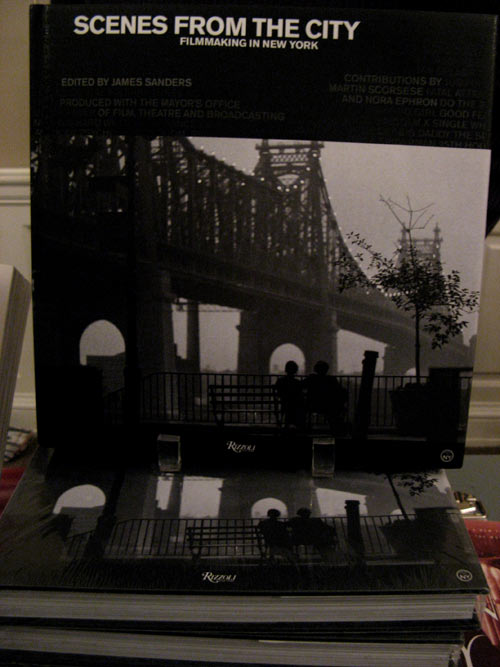
Commissioner Katherine Oliver of the Mayor’s Office of Film, Theatre, and Broadcasting began the presentation, offering an overview of the 40-year history of the MOFTB. Last year, New York City hosted the highest number of film, television, commercial and music video shoots ever: 34,718 shooting days, up from 31,570 in 2005, and 23,321 shooting days in 2004. The city’s movie industry now employs 100,000 New Yorkers, and by the office’s calculations, brings in about $5 billion to the city’s economy every year.
Up next, a slide show presentation by James Sanders, architect and co-writer of the Emmy Award-winning PBS series New York: A Documentary Film (the DVD set of which I received for my birthday last year, compliments of J & J), its companion volume, New York: An Illustrated History, as well as Celluloid Skyline: New York and the Movies (another present, this one from DH. Do my friends and family know me, or what?) Sanders’s new book Scenes from the City: Filmmaking in New York traces the evolution of filming in the city over four decades, contrasting the pristine New York of the Hollywood studio (Rear Window) with the gritty (Mean Streets, Do the Right Thing) and glittering (Breakfast at Tiffany’s, When Harry Met Sally, and so many others) New York of location shooting.
Some fantastic photographs, taken from movie sets, behind the scenes, or on the streets during shooting. Like Celluloid Skyline, there were rare and unusual production stills, taken from studio archives and private collections around the country.
Afterwards, a talk with Rob Striem (on left, below), location manger on several recent “Made in NY” films, the MOFTB program which awards filmmakers a 15% tax break — 5% from the city and another 10% from the state — for projects where at least 75% of the overall production was made in New York City. Streim is currently co-location manager for Warner Brothers Pictures’s I Am Legend, a big budget, sci-fi thriller starring Will Smith, which famously took over the Brooklyn Bridge late last month.
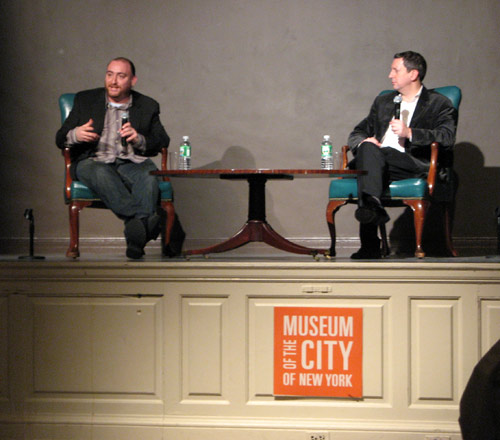
Upstairs, a glimpse of the MCNY galleries.
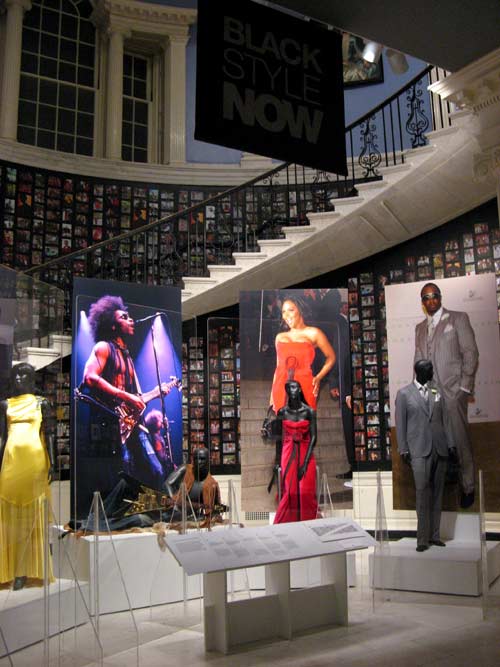
To sleep, perchance to dream
SN just didn’t trust that the vegetarian ramen broth at Menchanko Tei was entirely pork-free, so we decamped a few doors west to Tang Pavilion, a restaurant I must have walked past dozens of times without ever dining inside even once.
I tend to eat my Chinese meals in Chinatown (Downtown Manhattan or Flushing); the Midtown focus on such niceties as a sommelier and dining room captain don’t particularly enhance a meal for me, and in some ways, almost detract from my enjoyment of the authentic pleasures. Which is certainly not to say that some solid Chinese food can’t be had outside of the ethnic enclaves. I like a pretty room as much as the next person; I suppose I’m usually just more focused on the food than on the decor.
Tang Pavilion’s reviews vary pretty widely, so I was entirely unsurprised by the average-ness of my meal that night. To be fair, I did not order from the recommended Shanghai menu, which features such chef specialties as braised baby eel and drunken chicken. If nothing else, though, the hushed calm of the dining room (free of clanking dishes and shouting waiters) gave us a chance to catch up in relative peace.
After dinner, I was among the few intrepid (read: foolhardy) enough to brave the frigid temperatures to check out multimedial artist Doug Aitkin’s sleepwalkers at the MoMA. The museum partnered with Creative Time, a New York-based public art organization, to commission, curate and present the large-scale installation. From January 16 through February 12, Aitken made a canvas of MoMA’s exterior walls, projecting the interwoven stories of five city dwellers on eight façades, transforming the Abby Aldrich Rockefeller Sculpture Garden into a vast outdoor multiplex.
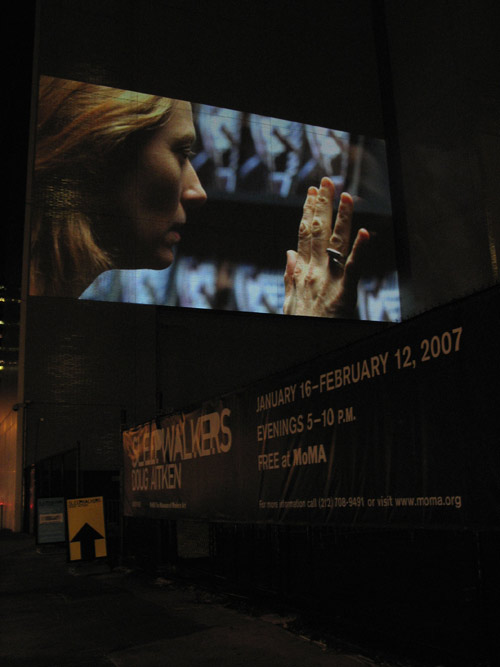
Each of the film vignettes follows a single character through one night in New York City, taking viewers to diverse locations throughout the city’s five boroughs, including the abandoned 19th century Atlantic Avenue subway tunnel, the heliport atop the MetLife Building (closed after a fatal 1977 accident back when it was known as the PanAm Building), a postal sorting facility in Queens, an ice skating rink in Staten Island, and behind the neon lights of Times Square. The characters move from the solitude of their personal and professional lives into the chaotic richness of their urban existence: a businessman, a busker, a postal worker, an office worker, and a maintenance man. The New Yorkers are played by Donald Sutherland, Tilda Swinton, Chan Marshall (Cat Power — hurray!), Seu Jorge, and street drummer Ryan Donowho (whom Aitken met in the subway.) The films taken as a whole have the feel of an urban symphony for the digital era, its characters rendered through the cityscape itself, silent but for the real-life soundtrack of the shouts, murmurs, rumbling cars and shuffling feet — and tonight: chattering teeth — of Midtown.
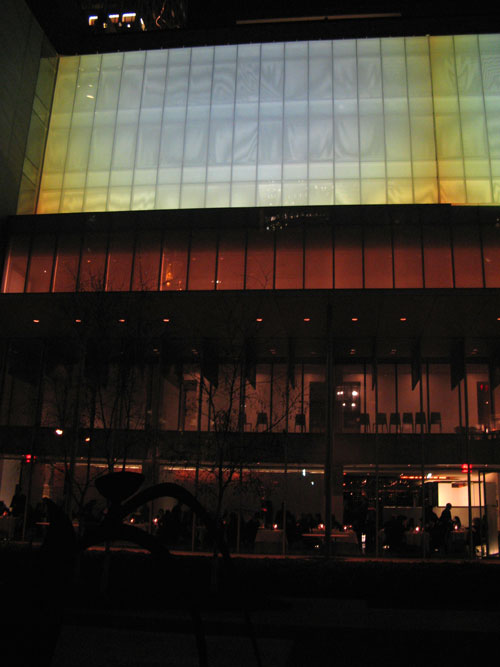
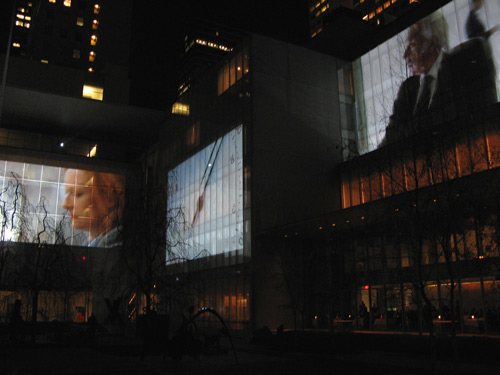
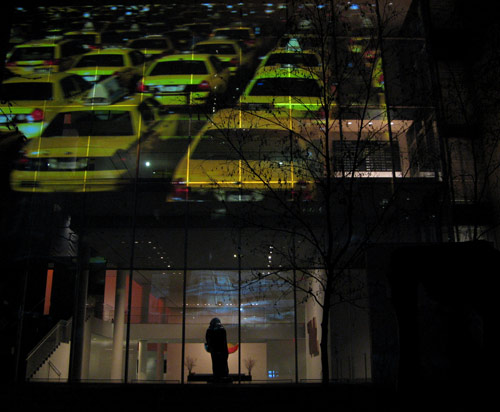
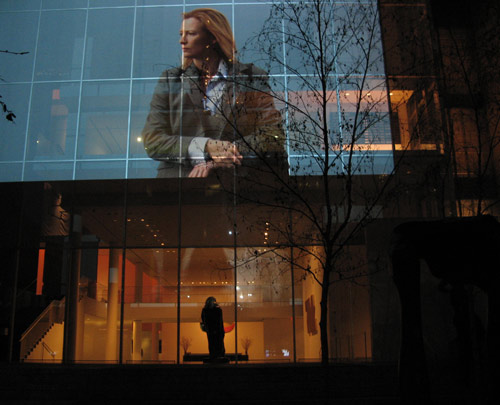
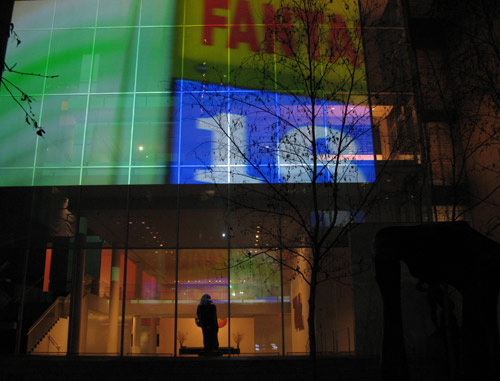
Aitken gives the banal moments a surreal beauty, underscoring the loneliness and forced connectedness of urban life: utter hopelessness and ultimate possibility, ever-reaching connectedness and aching loneliness.
Poor Little It Girl
Dinner and a movie in TriBeCa 10013, which this past spring, Forbes magazine named as the most expensive zip code in Manhattan — the twelfth most expensive in the nation — far eclipsing the Upper East Side’s 10021, which for generations was home to old money New York. As recently as 1990, before the dot-com and telecom booms, George and Weezy’s nabe was the wealthiest zip code in the country; by 2006, the national rank had dropped to number 255.
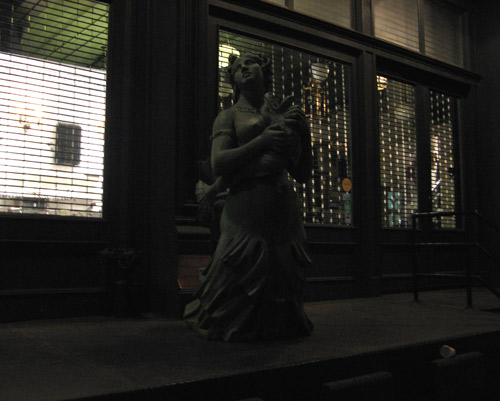
Bubby’s opened in TriBeCa in 1990 as a pie company. The menu has since expanded to cover casual homestyle breakfasts, lunches and dinners; on weekends, Bubby’s serves brunch to crowds of trendy families (and the occasional celebrity.) Even at this after-work dinner hour, M and I felt out of place without a stroller in tow.
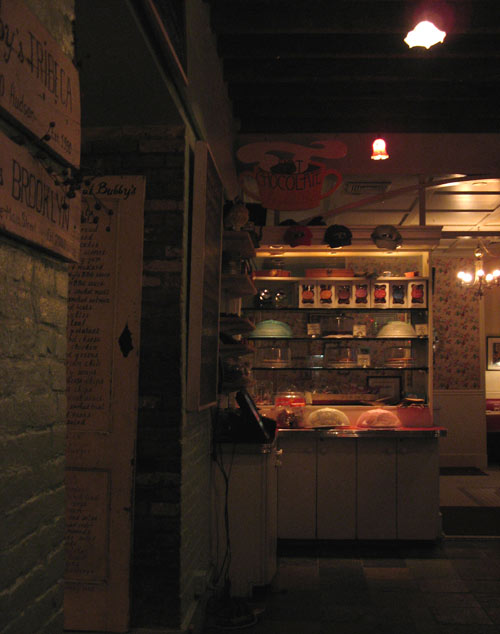
We forewent the famous pie to make our way to the Tribeca Grand for tonight’s preview screening of Factory Girl.
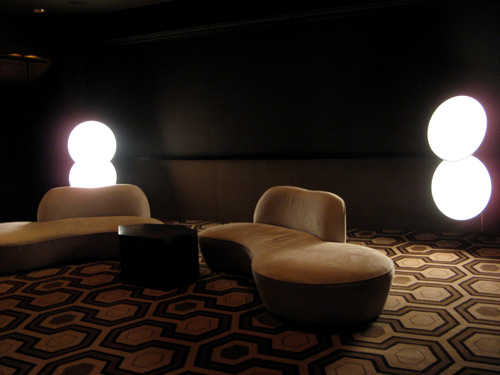
The film chronicles the rise and fall of heiress, fashion icon and Andy Warhol muse Edie Sedgwick (Sienna Miller). The story of Sedgwick’s tragic life — she died in 1971 of a painkiller overdose at the age of 28, a year after leaving rehab — has taken on the proportions of a cult myth, as do most true tales of brief, intense lives. This most recent rendering of Sedgwick’s story does better as a slice of pop-culture history than as a biopic; probably the best that can be said about the film is that the costumes are fabulous and Miller is very pretty.
Screenwriter Captain Mauzner (a.k.a. Josh Klausner — I wonder how he got his friends to start addressing him as “Cap’n”?) was at the event to discuss making the movie. Mauzner’s first movie, a ten-minute short titled Atomic Tabasco, received an honorable mention at Sundance in 1999; in 2003, he was an associate producer and screenwriter for Wonderland, about porn star John Holmes’ involvement in the 1981 Laurel Canyon murders. Mauzner offered some insights into the journey from concept to finished film. Factory Girl was a three year process, which involved extensive revisions — over a dozen by Mauzner’s count. It was interesting to hear how casting considerations shaped the screenplay; the role of Warhol (an unnerving Guy Pearce) had to be expanded significantly so it would appeal to a higher profile actor, since Miller alone was not considered a big enough box office draw. Mauzner did not mention — nor did anyone dare ask — about the other rewrites prompted by rumored threats of litigation.
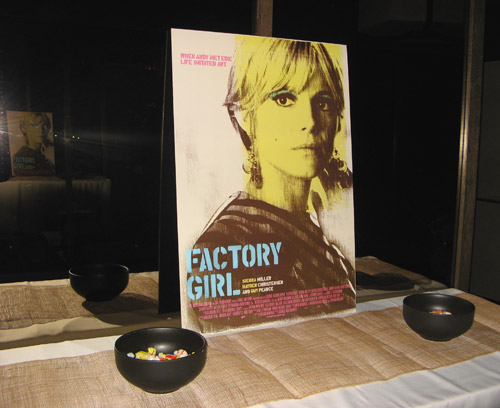
During the Q&A, one audience member used the word “biopic” to describe the film… except that she pronounced it “bi-AH-pik” (rhyming with myopic) instead of what I thought was the standard “BI-oh-pik.” I’ve actually now heard the former pronunciation from several different sources (including television), so when I got home that night, I did some research to find out whether that was an alternate, but correct, pronunciation of the word. It isn’t.
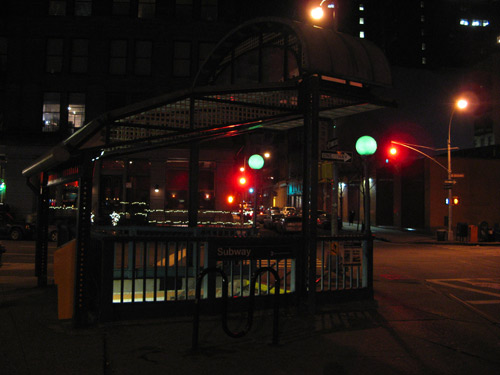
| S | M | T | W | T | F | S |
|---|---|---|---|---|---|---|
| 1 | 2 | 3 | 4 | |||
| 5 | 6 | 7 | 8 | 9 | 10 | 11 |
| 12 | 13 | 14 | 15 | 16 | 17 | 18 |
| 19 | 20 | 21 | 22 | 23 | 24 | 25 |
| 26 | 27 | 28 | 29 | 30 | 31 | |
Search
Popular Tags
Categories
Archive
- July 2010
- July 2009
- January 2009
- November 2008
- September 2008
- August 2008
- July 2008
- June 2008
- May 2008
- April 2008
- March 2008
- February 2008
- January 2008
- December 2007
- November 2007
- October 2007
- September 2007
- August 2007
- July 2007
- June 2007
- May 2007
- April 2007
- March 2007
- February 2007
- January 2007
- December 2006
- November 2006
- October 2006
- September 2006
- August 2006
- July 2006
- June 2006